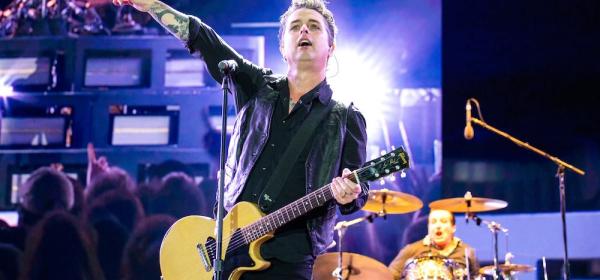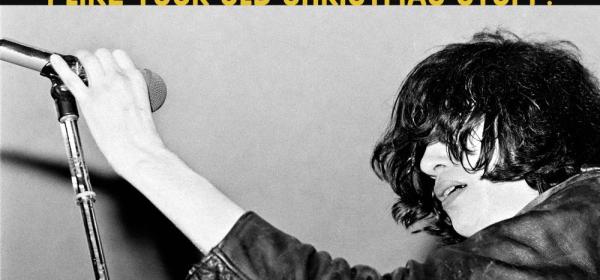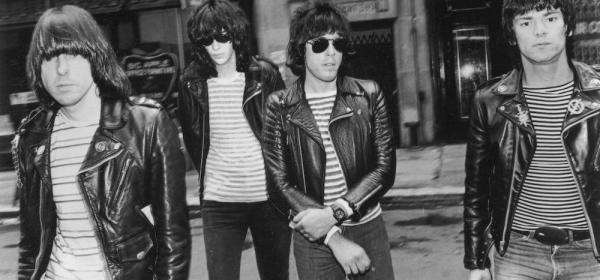The weekend saw the passing of yet another hugely influential figure in American music – one who influenced and was championed by everyone from Bruce Springsteen and Nick Cave to U2 and Primal Scream, and from the Ramones and Blondie to Depeche Mode and Soft Cell. His influence has been proclaimed by critics and the artists themselves, yet the man in question – Alan Vega - remained unknown to most fans of these artists and to the music world at large for the duration of his musical life.
Alan Vega was as enigmatic as he was influential. He was best known as half of New York electronic duo Suicide, who began in 1970 on New York’s crumbling lower east side. Suicide called their music ‘punk’ half a decade before the term was used to describe the likes of the Ramones and the Sex Pistols. And they didn’t have the usual punk instrumentation (guitars and drums); they had a cheap synthesiser and rhythm machine (played by Martin Rev) and Vega’s voice.
With a background in free jazz and visual arts, the duo were hardly your average rockers either. But they were rockers. Although most people didn’t realise until recent years, Vega was a good 10-15 years older than most of his contemporaries. He was 78 when he died. He was old enough to have witnessed first-hand the early street corner rock’n’roll of New York in the late 50s and early 60s, and took the heart and spirit and rhythm of the streets of his youth and added to it the madness and chaos and noise that surrounded him on the streets and subways in the ‘70s. In doing so he and keyboardist Marty Rev created a nightmarish new rock’n’roll that captured the life-affirming freedom inherent in the original music and set it in a corrupted, oppressive and violent modern environment. Vega himself became something like an Elvis from Hell – or at least from the Twilight Zone - or maybe a ‘70s Scorsese film - and he confronted the oppression around him by swinging a bicycle chain on stage rather than his hips. And in the same way that squares in the ‘50s reacted to Elvis with revulsion, audiences in the self-satisfied ‘70s reacted to Suicide with fear, and, as often as not, violence. Tales of violence erupting at Suicide shows are legendary. And Vega was the focus of that violence, even more than the minimal electronic music; his voice would go from a whisper to a scream, with the middle ground often held by an expressive mumble that suggested a stream-of-consciousness commentary or an inner-monolog of the soul (or perhaps even a Travis Bickle ‘Are You Talking To Me?’ verbalisation) that would eventually burst forth in his inimitable grunts, woops and screams.
Suicide’s self-titled first album is an incredible record. Songs like ‘Rocket USA’ , ‘Johnny’ and ‘Ghost Rider’ (which saw the low ranking ’70s Marvel comics anti-hero raised to a true American icon) are scary but catchy as hell – Rev’s electronic pulse beat really does capture the finger-poppin’ rhythm of early rock. The legendary "Frankie Teardrop" is one exception to that. More has been written about this harrowing and exhausting piece – it’s the one that attracts the Stooges fans - than anything else on the record, and it’s the one that no doubt is subject to the most extreme responses. But the song highlights only one aspect of what Suicide was about. For all their intensity, Suicide’s reduction of music into a minimal electronic sound set a template for the type of electronic music that dominated the charts for decades to come, and still does today, whether it be in pop or R’n’B. The reductive minimalism also inspired another figure in love with early rock’n’roll – Bruce Springsteen – whose ‘Nebraska’ album transposed Rev’s echoed-electronics to the top strings of an acoustic guitar, and Vega’s hushed soul baring from the big city to the small town. Decades later, Springsteen would faithfully cover ‘Dream Baby Dream’ from Suicide’s second album, which had featured a more polished but no less intense sound than the first.
After that second album, Vega spend the next decade or so – the ‘80s – pursuing a solo ‘career’. His first two solo albums reintroduced a lone guitar to his modern vision of rock’n’roll, but it was still minimal and still surreal. And still catchy as hell, not counting the 12 minute howl from the darkness that was ‘Viet Vet’. The version of ‘Be Bop A Lula’ on his second album ‘Collision Drive’ sat alongside a handful of tunes that – if not for the stark modernity of the performance – sounded like they could have been as equally popular in the ‘50s as the Gene Vincent tune. Such was Vega’s ability to capture the early rock’n’roll essence in his song writing. His third album, the Elektra album ‘Saturn Strip’ (produced by the Cars’ Ric Ocasek, as had Suicide’s second album been), transported Vega back into the future, leaping ahead of so many of the synth pop artists he’d inspired with a heavily rhythmic electronic sound used to startling effect on an out-of-the-blue and incandescent cover of Hot Chocolate’s ‘Everyone’s A Winner’, a rare song in which Vega found a positive and inclusive message to match his own.
This positivity and inclusiveness is what most people overlook when they’re talking about Vega and Suicide. It wasn’t about the violence – that was just a by-product of their fearlessness. Ultimately Suicide looked into the heart of darkness and found a light of hope and shared-humanity. Just as Elvis had.
Suicide reunited at the end of the ‘80s, and remained active off and on, almost up until Vega’s death. They became more relevant than ever in the post-9/11 world. Vega also returned to the world of visual arts, but continued to make and record new music with Rev and with others, incorporating modern music influences, addressing the modern work and - despite the now-legendary status of his early work – always looking forward.
- DL




